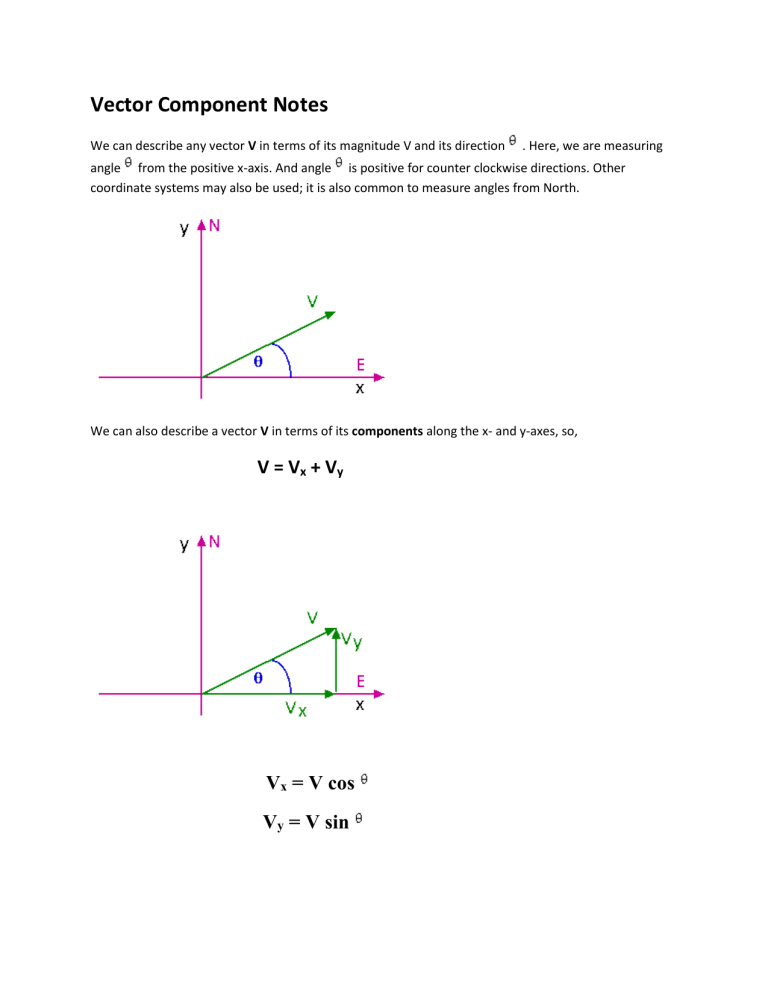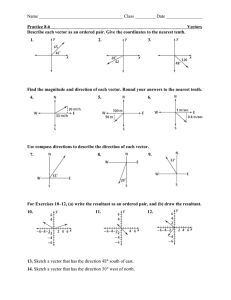Vector Component Notes

Vector Component Notes
We can describe any vector V in terms of its magnitude V and its direction . Here, we are measuring angle from the positive x-axis. And angle is positive for counter clockwise directions. Other coordinate systems may also be used; it is also common to measure angles from North.
We can also describe a vector V in terms of its components along the x- and y-axes, so,
V = V x
+ V y
V x
= V cos
V y
= V sin
Now consider a second vector U. It, too, may be expressed in terms of its components,
U = U x
+ U y
How can we add vectors U and V in terms of their components? That is, we want a resultant vector R
R = (U x
+ U y
) + (V x
+ V y
)
R = (U x
+ V x
) + ( U y
+ V y
)
R x
= U x
+ V x
R y
= U y
+ V y
If we add the values for the x and y components we get:
So, added together we get:
Simplified
Lets show the resultant vector components
To solve for the resultant use the pythagorean theorum
To solve for the angle theta, tan = opp / adj
= R y
/ R x
= arctan ( Ry / Rx)
The notes above were taken from http://www.ux1.eiu.edu/~cfadd/1150/03Vct2D/VectrComp.html


